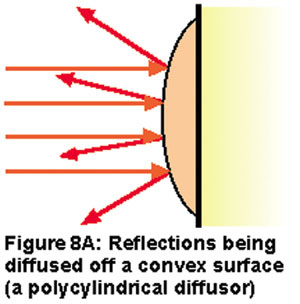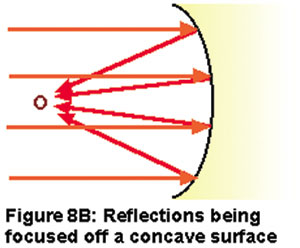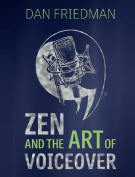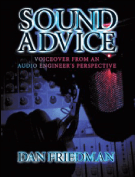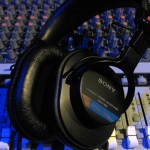 Recording Magazinesends out a newsletter to its subscribers every few weeks. The newsletter is (coincidentally) titled “Sound Advice” and this month it features a new series on headphones and monitors. I asked permission to reprint this newsletter (and will ask to reprint the others in the series as well) so that those of you with home studios can also benefit from the information. I want to personally thank Brent Heintz, VP/Associate Publisher for granting permission, allowing me to share this great information with you.
Recording Magazinesends out a newsletter to its subscribers every few weeks. The newsletter is (coincidentally) titled “Sound Advice” and this month it features a new series on headphones and monitors. I asked permission to reprint this newsletter (and will ask to reprint the others in the series as well) so that those of you with home studios can also benefit from the information. I want to personally thank Brent Heintz, VP/Associate Publisher for granting permission, allowing me to share this great information with you.
Please visit Recording Magazine‘s website and their Facebook Page.
Voiceover usually deals with a singular signal (your voice) and therefore it is typically mono. However, the importance of space and spatial recognition cannot be overstated. By their very nature, how you hear headphones and monitors greatly effects how you hear yourself and your ability to interpret what you hear.
So… please enjoy this installment from Recording Magazine’s Sound Advice on Acoustics.
Welcome back to Sound Advice on Acoustics! We’ve been discussing how to use headphones as critical listening monitors, but author Robert Auld warned us way back at the start that his answer to “Can we do it?” is “Yes, but.” In this month’s installment, it’s time to look at a really big ‘but’, if you’ll excuse the expression…
***
I said that my ‘yes’ to using headphones as critical monitors was qualified. Jerry Bruck explains one small but important problem that can happen when editing stereo program material:
“I love using headphones for editing because of the precision. If there’s some vestige of something you don’t want in a splice that’s, say, coming in or going out, the headphones will nail it in a way that loudspeakers never do.
“But—and this is a big but—a real danger exists, because I have many times had the experience, as others have had, of making a splice in music, and on headphones it is totally inaudible. You sit there congratulating yourself on what a wonderful splice you have just made, and then take the headphones off and turn up the speakers, and suddenly it’s glaring. It’s there, and you can hear it, and you go, ‘How can that be? Why can I hear it on speakers and not on headphones?’
“I don’t really have an explanation, but I will venture one: that it has to do with the phase relationships between the channels. Again, it’s the interaural mixture that occurs with speakers and doesn’t occur with headphones. Once that happens the two channels have phase relationships that are a giveaway that something has happened here that could never happen in real life.”
“So I would more than caution anyone, I would actually warn anyone who attempts editing in headphones: check your work on speakers. It doesn’t happen every time; it happens like one time out of twenty… but that one time will really amaze you when it occurs, and you’ll have to go back and redo it. Otherwise everyone is going to hear it.”
A good case can be made for always using both headphones and loudspeakers to monitor our work. The two different monitoring methods each tell us different, useful things—stuff that we really need to know. (There is also the issue of the increasing use of headphones by our listeners with all those millions of portable music players out there.)
Once we decide to work this way we can reap some real advantages from it. For example, if I have really good headphones I have less need for big, expensive loudspeakers. The things I need speakers for—checking the stereo image, the direct to reflected sound balance, etc.—can be reproduced just fine by smaller, less expensive loudspeakers (provided their basic sound quality is adequate). Other things—fine balances between instruments in the mix, little details of performance, tonal colorations, etc.—are better checked on top quality headphones.
Jerry Bruck has taken this idea to its logical conclusion for some of his location monitoring. On some of his smaller scale jobs, where he doesn’t want to lug around a whole van-full of equipment, he brings along the Cambridge SoundWorks Model Twelve speaker system.
You’ve probably seen the ads for it: “stereo in a suitcase.” Two small satellite speakers and a small 3-channel amp fit into a medium sized carrying case that also has a built-in woofer. Unpack the amp and the satellites and the case becomes the subwoofer of a powered 3-piece system. According to Jerry, the sound quality of the Model Twelve is quite good—certainly accurate enough to tell him what he needs to know. Then for the fine details, on go the headphones.
[Editor’s note: at the time of this writing, the Cambridge Soundworks system was, if not unique, unusual and worthy of mention in the industry. Nowadays there are a lot of fairly portable 2.1 speaker systems with tiny satellites and a reasonably portable subwoofer that might serve as alternatives to headphones, or even stereo coaxial systems with optional or no subwoofer that can do the job. Recently reviewed speakers of this type include the Equator Audio D5, reviewed December 2011, and the Pelonis M42, reviewed April 2012.]
I’ll leave you with this thought before we consider how to evaluate different headphones:
“It is an axiom of any recording technique that the final result is only as good as the monitoring system used when making the recording. The more accurately the recording engineer can hear throughout the process, the better the final result will be.” —Streicher and Everest
See you next month as we go into the home stretch with testing criteria and suggested listening material!
